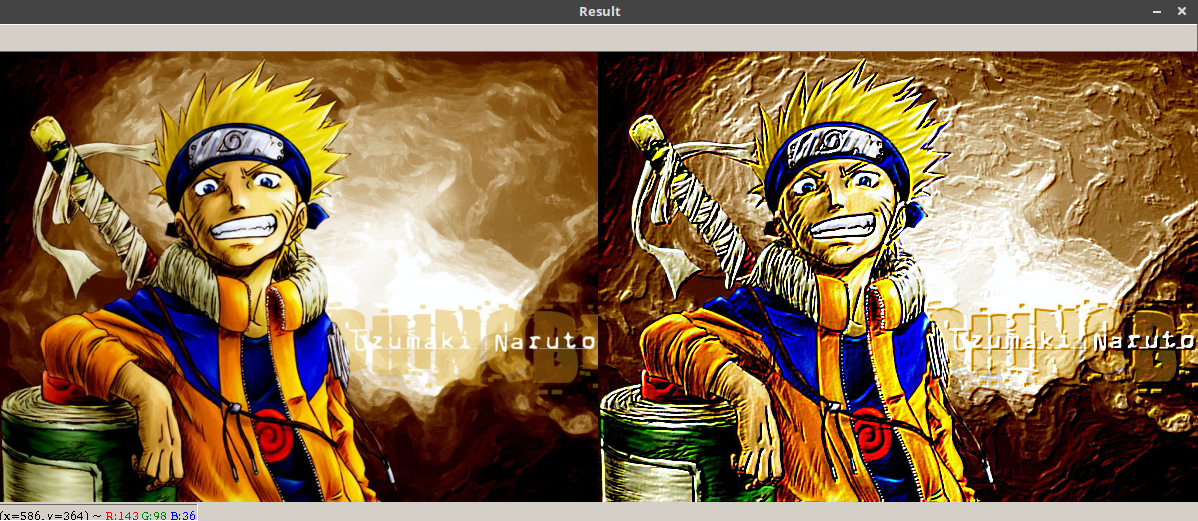Opencv-Python-Computer-Vision
Check out this blog series for the updates on my OpenCV projects.
Color-Based-CBIR-System
Steps taken to implement a CBIR system:
- Define your image descriptor and create imagebase for training.
- Train your imagebase over the defined descriptor and save feature vector.
- Create a search file to search/rank the images when tested against query.
- Create testing file to test against saved feature vector for imagebase.
This folder includes files:
- featureVector.py This file contains code for color histogram feature extraction, that return a numpy vector.
- training.py This file trains imagebase over our featureVector and save the output in trainingdata.pickle.
- search.py This file is used with testing where it helps in searching/matching featureVectors for test images and trained images.
- testing.py This file is used for testing our system.
4 Point Perspective Transform
Steps to find the maximum sized 4 point image (considering only (possibility) rectangle):
- Find edges of the image using canny edge detection.
- Supply the edges to the countour function to find all possible contours.
- Sort these countours (coordinates) in non-increasing fashion.
- Check for 4 point countour, from the start of the returned list of countours.
- Pass these 4 points to transform function.
Steps involved:
- First of all take image and 4 points you need to transform over a perspective space.
- Order those points in following fashion [top-left, top-right, bottom-right, bottom-left] using basic coordinate math.
- Calculate the maxWidth and maxHeight for the perspective window, to fit the 4 point image.
- Calculate perspective matrix (3x3) over given image and points.
- Wrap the perspective over the perspective window.
Video Read/Write
This file contains code for how to read/capture video from webcam, and then how to save it in (avi) extension (most stable using opencv). It uses VideoCapture and VideoWriter classes to perform these operation.
Screenshot
This file implements PyAutoGUI functionality to capture screenshot whenever this program runs. It saves the result in the current folder.
Paint Application
This app implements only paint brush operation. It uses createTrackbar and getTrackbarPos methods available in opencv3 to adjust colors and size of paint brush. It uses setMouseCallback to allow mouse events to happen.
You can check this blog for more information on the approach taken.
Opencv Symbol Drawing
It shows code on how to make use of drawing functions in opencv to achieve a particular figure (here, opencv symbol). It makes use of ellipse method of cv2 and by defining proper parameters to angle and rotation, symbol drawing can be achieved.
You can check this blog for more information on the approach taken.
Detect Skin
Proper parameters (lower and upper limit for HSV color) are given on how to detect skin (asian) using inRange and bitwise__and method.
Color Transfer
It contains code for famous Reinhard algorithm (www.cs.utah.edu/~shirley/papers/ColorTransfer.pdf), that uses Lab* (Lightness) color-space and simple mean and standard deviation to transfer color from one image to another. Using histogram approach can be very complex for large sized images but this executes within seconds for any sized image.
Image Slide Show
It shows how to achieve slide show functionality using opencv, one can also try to save each image (result in slide show) in a video format to view blending of images. It makes use of addWeighted() method to view transitions.
You can check this blog for more information on the approach taken.
Multiple Color Detection Simultaneously
When executed, this file can detect blue, green and red color simultaneously in a video (webcam extracted). If facing problems, try to change values in (blower-bupper, glower-gupper, rlower-rupper) as per your needs.
Dynamic Canny Edge Detection
Stages involved in Canny Edge detection:
- Noise Reduction
- Gradient Separation
- Non-Maximum Suppression
- Thresholding
Here, the file executes for a single image window and shows how canny edge detection results varies for different values using a trackbar application.
Brocade Naruto
This python script allows user to give a fancy look to your image. Here i have used Naruto's image as an example. It involves the following steps to write python script:
- Import the required libraries.
- Define class Brocade, that will contain our kernel and main function definition.
- Then call the main function, if it is inside the same script.
You can check this blog for more information on the approach taken.
- Result
